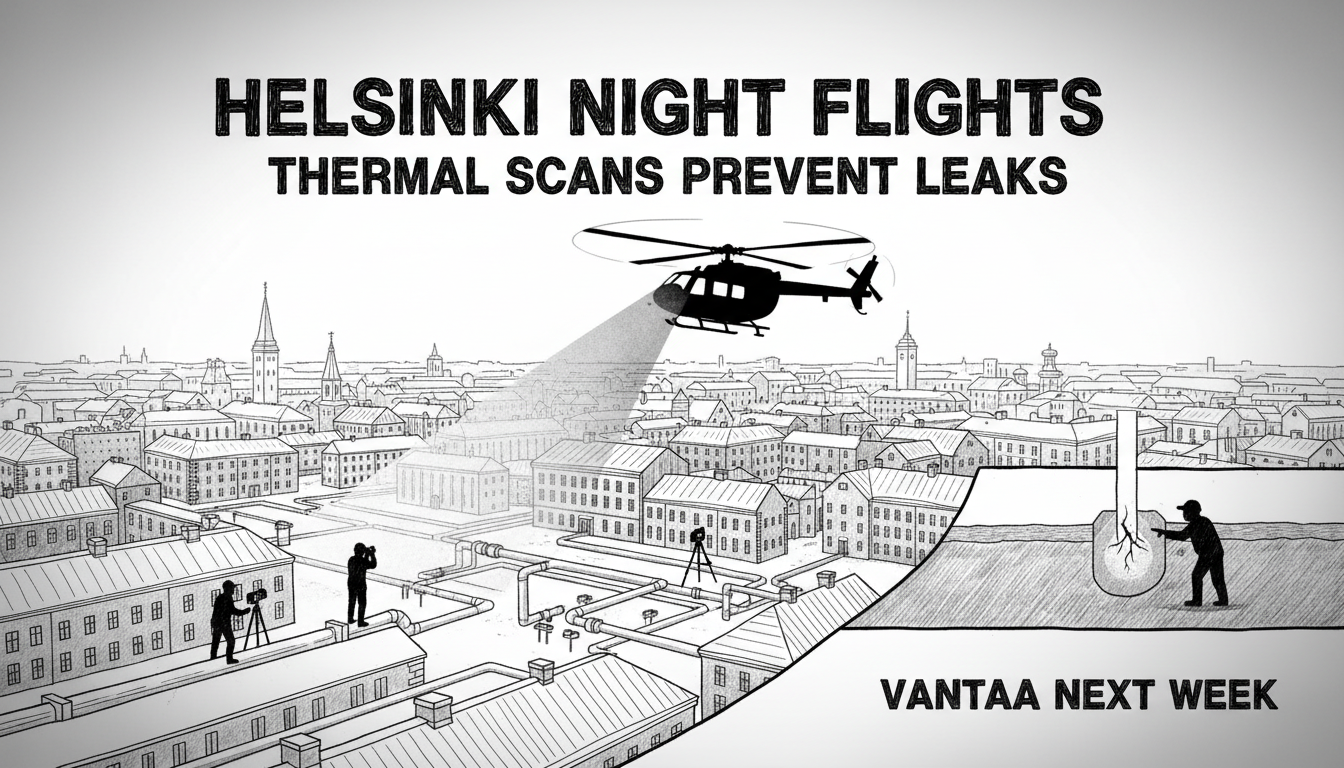Residents in eastern Helsinki noticed unusual helicopter activity during two consecutive nights. The aircraft flew back and forth at low altitudes, prompting numerous inquiries from concerned citizens. The mystery has now been resolved through official channels.
The helicopter was conducting thermal imaging surveys of district heating networks for energy company Helen. This routine maintenance work occurs twice annually during spring and autumn periods. The flights represent standard preventive measures for urban infrastructure management.
Gridjet, the company performing these surveys, has conducted this work for Helen over ten years. Company director Pekka Ristolainen explained the process in detail. The helicopter flies at 300-400 meter altitude along predetermined routes while thermal cameras continuously record data.
Why does this matter for urban infrastructure? District heating systems provide warmth to most Helsinki homes and buildings. Identifying potential leaks before they become major problems prevents street flooding and service disruptions. Proactive maintenance saves substantial repair costs and minimizes public inconvenience.
Night operations serve specific technical purposes. Ground temperatures stabilize after sunset, creating optimal conditions for thermal detection. Reduced traffic means fewer visual obstructions hiding sections of the heating network. Ristolainen noted that daytime surveys would miss critical infrastructure hidden beneath parked vehicles.
Each survey session involves four hours of flight time divided into two two-hour segments. The Helsinki portion has concluded, with Vantaa scheduled for similar inspections next week. This systematic approach ensures comprehensive coverage of the metropolitan area's heating infrastructure.
Finland's district heating systems represent crucial urban utilities, especially during harsh Nordic winters. Regular aerial inspections demonstrate practical infrastructure management. The method combines traditional maintenance with modern thermal imaging technology for optimal results.
While nighttime helicopter activity might cause temporary disturbance, the long-term benefits outweigh short-term inconvenience. Well-maintained heating networks prevent emergency repairs that would cause greater public disruption. This proactive approach reflects Finland's methodical infrastructure management philosophy.
The situation highlights how modern cities balance technological advancement with residential comfort. Helsinki's approach demonstrates that routine maintenance, though occasionally visible to residents, ultimately serves community interests through reliable winter heating services.

